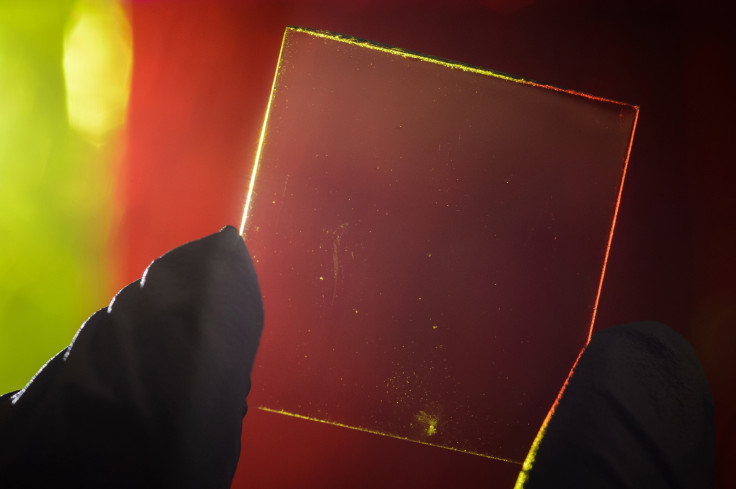Energy Research: Scientists Develop Transparent Solar Concentrator

Researchers at Michigan State University have developed a new type of luminescent solar concentrator (LSC) that does not block the light while converting the photons into solar energy.
Being transparent and flexible while producing solar energy, the LSC comes as a boon for application in buildings, cell phones or e-readers, according to the team.
"No one wants to sit behind coloured glass," Richard Lunt of MSU's College of Engineering, an assistant professor of chemical engineering and materials science said in a press release. "It makes for a very colourful environment, like working in a disco."
The team is working on raising the concentrator's solar conversion efficiency from 1% to 5%. The maximum efficiency achieved so far with coloured LSCs is around 7%.
Using small organic molecules developed by Lunt and his team to absorb certain wavelengths of sunlight beyond the visible spectrum, they could tune the materials to absorb one wavelength of light and emit another wavelength.
For instance, they could be tailored to absorb in the ultraviolet and the near infrared wavelengths and then "glow" at another wavelength in the infrared.
The emitted light is guided to the edge of the plastic where it is converted to electricity by thin strips of photovoltaic solar cells.
As the materials do not absorb or emit in the visible part of the light spectrum, the LSC remains transparent to the eye.
The research was featured in a recent issue of the journal Advanced Optical Materials.
© Copyright IBTimes 2025. All rights reserved.





















